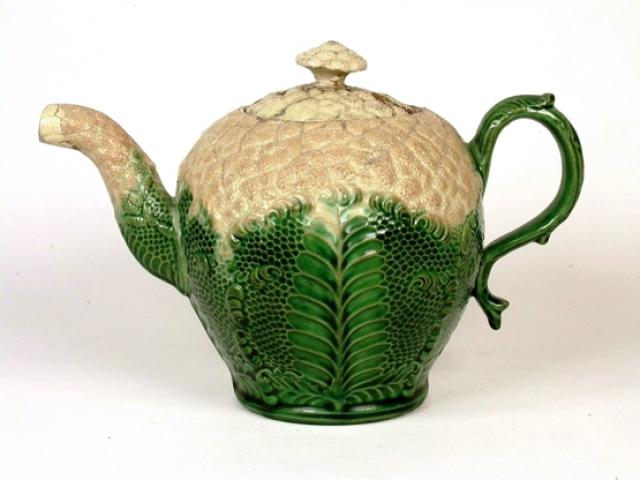Wedgwood and Nature: Cauliflower Ware Teapot
Rarely has nature been more important to our quality of life than during these current times yet, way back in the 1750s, Josiah Wedgwood had a fascination with the natural world that has proved to be a source of constant inspiration for the craftspeople and designers of Wedgwood. During this series we look at the lasting creations that nature inspired.
Cauliflower Ware Teapot
Josiah Wedgwood I is best known for his classically-inspired wares. However, in his early manufacturing days Josiah, in common with many other Staffordshire based ceramic manufacturers, produced exceptionally ornamental, rococo-style wares inspired by fruit and vegetable forms.
Wedgwood used an earthenware body that could be naturalistically modelled or moulded into these forms. The lower part of the cauliflower ware was crafted to closely resemble leaves and was then covered with a brilliant green glaze. The cauliflower ‘head’ was glazed cream or yellow. William Greatbatch, the Staffordshire potter, supplied Wedgwood with models for such wares. Josiah also produced melon and pineapple wares, and the green glaze used to decorate these lifelike items is thought by many to have been developed by Wedgwood himself.
In the early years, Josiah exported a great deal of what he called ‘colley-flower’ wares to Europe, particularly the Netherlands. Ceramic retailers, such as Samuel Tabor in Rotterdam, frequently wrote to Wedgwood at his Brick House Works in Burslem, requesting fine goods such as ‘…Lanskip, pineapple, Colleflower &c but these must be in setts…’
From time to time, throughout Wedgwood’s history, these naturalistic wares have experienced revivals. The Barlaston factory last produced ranges of cauliflower wares in the 1950s. At that time, other traditional forms and patterns were also being revived after the decorating restrictions in the ceramic industry were lifted after the end of World War II.
